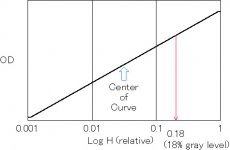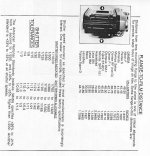R
ruben
Guest
Ok, now I am a bit enraged, for something i have been reading nearby, but I will remind myself I was already enraged before, so I will try to keep my balance.
As far as my shooting is concerned the Sunny 16 is of very limited use. So whoever has bought a meter recently out there, congratulations.
Why the Sunny 16 is of limited use to my opinion ? Because there is a single thing it provides you for sure, that under sunlit situations your expo for ISO 100 is dead on f/11 and 1/250, or equivalent. Not much more
Now some friends will start jumping on me with their "shady 5.6" and so forth, but from here on we enter the field of speculation and guessing. And don't get me wrong, I too favour very much guess, speculation, intuition and experience.
But the problem of the urban photographer is not in the sunlit situations but metering the shadows. The shadows intensity vary. And then you either have a lot of expeience, or small experience but you are ready to bet, or.... you use the light meter.
I wait to a bus in a sunlit morning, and no problem. But as soon as i am in the bus there is a totally different situation leaving the Sunny 16 useless. Then you start walking in the city, want to shoot inside a bar or shop and the Sunny 16 is again useless. Then you have a narrow shadowed street and i would like to see there the advocates of the "shady 5.6". Etc.
Experience is not only good thing but a solid one. The Sunny 16 rule is very limited, a fairly modest start.
Cheers,
Ruben
As far as my shooting is concerned the Sunny 16 is of very limited use. So whoever has bought a meter recently out there, congratulations.
Why the Sunny 16 is of limited use to my opinion ? Because there is a single thing it provides you for sure, that under sunlit situations your expo for ISO 100 is dead on f/11 and 1/250, or equivalent. Not much more
Now some friends will start jumping on me with their "shady 5.6" and so forth, but from here on we enter the field of speculation and guessing. And don't get me wrong, I too favour very much guess, speculation, intuition and experience.
But the problem of the urban photographer is not in the sunlit situations but metering the shadows. The shadows intensity vary. And then you either have a lot of expeience, or small experience but you are ready to bet, or.... you use the light meter.
I wait to a bus in a sunlit morning, and no problem. But as soon as i am in the bus there is a totally different situation leaving the Sunny 16 useless. Then you start walking in the city, want to shoot inside a bar or shop and the Sunny 16 is again useless. Then you have a narrow shadowed street and i would like to see there the advocates of the "shady 5.6". Etc.
Experience is not only good thing but a solid one. The Sunny 16 rule is very limited, a fairly modest start.
Cheers,
Ruben
Last edited by a moderator:



